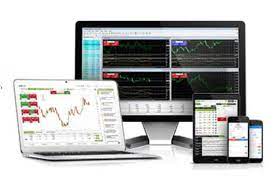The forex market is one of the largest and most liquid financial markets in the world, with trillions of dollars traded each day. For new traders, navigating the Forex market can feel challenging, especially with its dynamic price movements and varied influencing factors. A daily analysis of the forex market can be a highly valuable tool for staying informed and making better trading decisions.
This article will explore the importance of daily market analysis and highlight key factors to consider when examining forex trends.
Understanding Daily Forex Market Movements
Forex markets are impacted by a variety of factors, including economic indicators, geopolitical events, and market sentiment. Each trading day offers new opportunities as currency pairs fluctuate in value, driven by these influences. Checking daily market trends can help traders identify potential entry and exit points in their trades.
For instance, major news like changes in central bank interest rates or unexpected economic data can lead to sharp price movements in specific currency pairs. Keeping an eye on economic calendars and market reports ensures that new traders remain aware of key events that may impact their positions.
Key Factors Influencing Daily Forex Trends
1. Economic Indicators
Economic reports such as GDP growth, employment rates, and inflation figures are among the most critical drivers in forex markets. For example, when a country’s economic growth exceeds forecasts, the value of its currency often strengthens relative to others. Regularly tracking economic calendars helps traders anticipate these events and their potential impacts on the market.
2. Market Sentiment
Market sentiment refers to the collective mood of traders and how they perceive future price directions. Sentiment analysis often includes monitoring net positions in a currency or examining technical indicators like Relative Strength Index (RSI) to gauge whether assets are overbought or oversold. For new traders, integrating sentiment analysis into their routine can offer a better understanding of overall market momentum.
3. Technical Analysis
Technical analysis focuses on price charts and historical data to predict future market movements. Popular tools such as support and resistance levels, moving averages, and trendlines are highly effective for intraday trading decisions. Incorporating these techniques into daily analysis can help traders evaluate the strength of current trends and plan accordingly.
4. Currency Correlations
Currency pairs often have relationships where the movement of one pair influences another. For example, pairs like EUR/USD and GBP/USD often move in the same direction due to their shared correlation with the U.S. dollar. Monitoring these relationships can help traders understand overarching market behavior.
Why New Traders Benefit from Daily Analysis
For beginners, a consistent daily review of forex markets provides a foundation for learning and improving. Watching the markets closely builds familiarity with how currencies react to external factors and enables traders to adapt to shifting conditions. Over time, this habit develops into a skill set that contributes to long-term success.
To simplify the process, new traders should consider starting with one or two currency pairs to analyze before expanding their focus. Tools like economic calendars, technical charts, and sentiment updates are integral for building a seamless analysis routine.
Final Thoughts
Daily forex market analysis is essential for traders who want to make informed decisions and achieve their trading goals. By combining economic insights, technical strategies, and sentiment evaluation, new traders can better grasp market movements and increase their confidence in trading. Start small, stay disciplined, and incorporate daily reviews into your routine for a more strategic approach to forex trading.
